Updated: May 29, 2022
Your reverse osmosis water tastes great and you have been enjoying it for several years now. But lately, you seem to have less and less water available from your reverse osmosis system. Even when it has had plenty of time to fill it seems that you keep running out of reverse osmosis water way too soon.
A reverse osmosis system may stop dispensing water if the pressure in the storage tank is too high or too low, there is insufficient incoming water pressure due to a clogged filter or membrane, blockage in the water supply line, the bladder has a leak or the tank has been emptied.
A standard reverse osmosis storage tank works with a bladder that is surrounded by pressurized air. The amount of water that goes in or out of the bladder depends on the supply of water and the bladder having the correct pressure surrounding it.
There are several things that can cause a reverse osmosis system to not deliver the amount of water that it ideally should. Check these common causes of why a reverse osmosis system will run out of water and find out how to get your system working as it should.
The air pressure in your reverse osmosis storage tank may be too low (Or Too High).
Improper air pressure in your reverse osmosis storage tank may allow too much water into your storage tank bladder or almost no water at all.
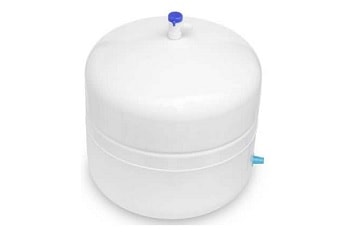
A reverse osmosis water storage tank works by applying air pressure to the outside of a rubber water bladder that allows water that is at a higher pressure than the air surrounding the bladder to go into the bladder, and then letting the water go out of the bladder when a faucet is opened.
Because the flow of water going into and out of the storage tank is based on pressure, the balance between the air pressure on the outside of the bladder and the pressure of the water on the inside of the bladder needs to be just right in order to allow the bladder to fill to full capacity and empty completely.
Just like on a bicycle tire, the air inside can gradually leak out of the reverse osmosis storage tank. When this happens there will not be enough air pressure surrounding the bladder to force all of the stored water in the bladder out.
Where your reverse osmosis system at one point was delivering 100% of its water capacity, overtime the drop in air pressure surrounding the bladder will make it deliver less and less filtered water, and eventually, the air pressure will drop to the point where almost no water will come out of the faucet at all.
While low air pressure will not force out all the water that a reverse osmosis system should, having too high air pressure will not produce optimum water as well. If the air pressure surrounding the water bladder is too high, it will not allow as much water into the bladder as it should and therefore there will be less water in the tank to dispense.
Many people think that if they increase the pressure in their reverse osmosis storage tank the water will come out faster so their glass will fill quickly. Unfortunately, when they pump more air into their storage tank, they are surprised to find that not only is the water coming out at the same speed, but there is much less water coming out than before.
For most standard reverse osmosis storage tanks, the air pressure inside of the tank should be between 5 and 7 pounds per square inch and some will work just fine at as much as 8 pounds per square inch.
See my article on “How To Re-pressurize A Reverse Osmosis Storage Tank” for more information on how your storage tank works.
Your reverse osmosis system may not be getting water to it.
In order for your reverse osmosis system to produce filtered water, it needs to have a good supply of unfiltered water. A kink in the water feed line going to the system or any clog or restriction can greatly reduce the amount of water that the system can produce.
Sometimes a water supply line can get pinched or kinked which may still allow some water to get to your reverse osmosis system but not with enough pressure to fully fill the reverse osmosis storage tank.

Since most reverse osmosis systems are installed underneath your kitchen sink, many items may be removed and then put back under the sink. When taking out or putting back an item under your sink, sometimes the water supply valve can get hit by an item and accidentally shut off or shut partially off.
Some Common Water Valves Used For Home Reverse Osmosis Systems.
Make sure that your water valves are in the “ON” position. The valve should be pointing in the same direction as the plumbing or tubing connected to the valve.
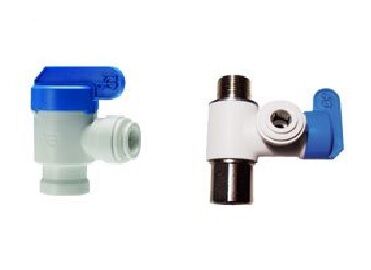
Either way, the reverse osmosis system will not get the proper flow of incoming water to produce a full tank of filtered water which means that you will run out of water sooner than normal.
a clogged pre-filter Could Be Preventing Your Reverse Osmosis Tank From Filling.
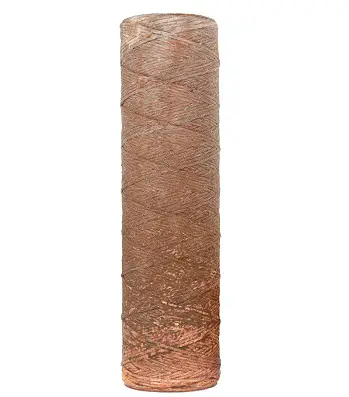
If you don’t have a whole house filter removing sediment from your water, it could get filtered out by your reverse osmosis system pre-filter which is exactly what it should do.
But if your pre-filter is filtering out sediment, it will over time slow down the flow of water getting to the reverse osmosis system and the water going to the system will not have enough pressure to properly fill the water storage tank.
This does not mean that you have to change your pre-filter very often just to make sure that your reverse osmosis gets all of the water that it should, it just means that you should check the pre-filter for clogging if you find that your reverse osmosis is not producing the amount of water that it normally does.
you could have a clogged post-filter.
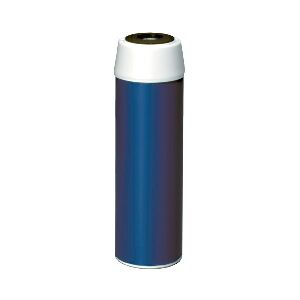
Although not nearly as common as a pre-filter getting clogged, a reverse osmosis system post-filter can get clogged by particles that have made it past the membrane of the system.
A pre-filter will not always catch the finer-sized particles that are in your water and they can also get past your reverse osmosis membrane as it gets worn. These fine particles will get captured in your post-filter and restrict the water pressure, therefore not filling the storage tank completely.
Water may not be getting through your reverse osmosis membrane.
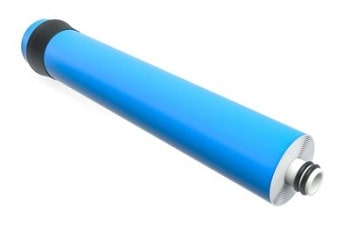
At some point, a reverse osmosis membrane will get enough particles trapped in its pores to where it will not allow sufficient water to flow through the membrane. Even if the quality of the water coming from the reverse osmosis system may be fine, the quantity that it is able to store in its storage tank may go down.
Essentially, a reverse osmosis membrane is a filter with small openings in it that will collect small particles in them just like a standard filter.
Even if the reverse osmosis system pre-filter looks clean, particles that are too small for the pre-filter to capture can end up captured in the openings of the reverse osmosis membrane.
The water pressure in your home may be too low.
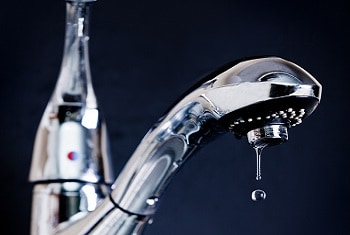
A standard residential reverse osmosis drinking water system requires a minimum of 40 PSI (Pounds per Square Inch) of water pressure to function properly.
Homes with older well pumps or pressure tanks might find that they do not produce a steady supply of water that is at 40 PSI or better. When this happens, not only can the reverse osmosis system not be able to produce the high-quality water that it should, but it may also not be able to produce as much water as it should.
In some cases, you can call your plumber and have the pressure in your pressure tank increased to the correct pressure or you could simply have the pressure tank replaced to ensure that the water pressure in the home remains at 40 PSI or better.
The water from a standard residential reverse osmosis system is not endless.
If you find that your reverse osmosis system is running out of filtered water more than it used to, you may just be using more water.
- Do you have more people using your reverse osmosis system than you used to?
- Have the kids grown up and are drinking more reverse osmosis water than when they were younger?
Your reverse osmosis system may run out of water simply because the demand for reverse osmosis water in your home has gone up and your system can’t keep up with the demand.

A reverse osmosis system makes filtered water at a much slower rate than it comes out of the faucet.
That is why a water storage tank is used so that you have a good but limited amount of reverse osmosis water ready for you to use when you want it.
If you find that your reverse osmosis system is working fine but you would like to have a larger storage tank to provide you with more stored water, they are very simple to replace and at a reasonable cost.

